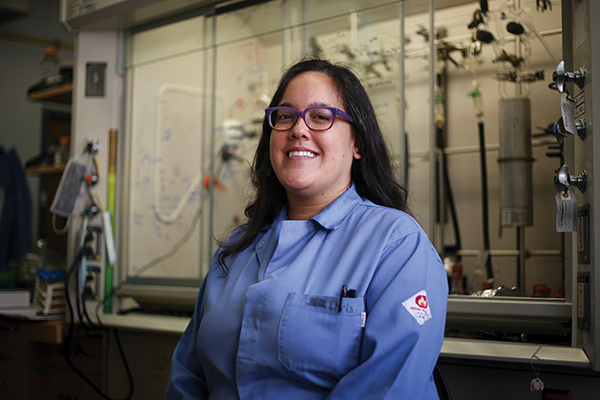University scientists are developing molecular tools that could impact future research on antibiotic-resistant bacteria and cancer drugs.
Emily Que, assistant professor of chemistry, was awarded the five-year, $1.5 million Maximizing Investigator’s Research Award by the National Institutes of Health, according to a Sept. 20 press release on. The award gives researchers flexibility to work on a wide range of projects in their field, according to the official website. Que said her lab, called the Que Lab, makes molecules that interact with metalloenzymes, proteins with a metal center that perform important functions in the cell.
Que said the grant helps fund two projects researching molecular interactions. For one project, the Que Lab is collaborating with the Fast Lab, located in the College of Pharmacy. The project focuses on New Delhi metallo-beta lactamase, an enzyme that makes bacteria resistant to a range of antibiotics, Que said.
“Bacteria just grow really, really, quickly,” Que said. “It becomes very easy for them to adapt and evolve new types of strategies to survive in the presence of antibiotics.”
One of the molecular tools being developed by the Que Lab is a florescent molecule that emits light when it binds to the active site of an enzyme.
Walter Fast, professor and head of the Fast Lab, said florescent molecules can be used to test whether drugs work. For example, if the cell lights up when the molecule binds to the protein and turns off when the drug is added, then researchers know that the drug has successfully reached the cell’s action site, Fast said.
The second project will utilize light activation to control whether a molecule binds to the enzyme, Que said. She said the arrangement of some molecules blocks their access to an enzyme’s active site, but different wavelengths of light can rearrange the molecule’s structure so it can access the active site.
Kanchan Aggrawal, graduate student in the Que Lab, said this project can help with research on cancer drugs. She said the carbonic anhydrase enzyme helps maintain a cell’s pH balance. In cancer cells, this enzyme is over expressed, leading to cellular defects and tumor spread, Aggrawal said.
Along with these projects, there are limitless possibilities for this research, Que said.
“Looking forward to the future is just trying to further expand these tools that we’ve been developing into other protein systems,” Que said.





















